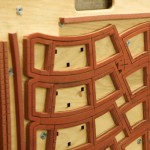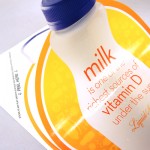It’s arguably one of the most important processes in print manufacturing, yet we often take die cutting and scoring for granted. Whether you are a seasoned expert or new to the print world, here is a good primer (or refresher) on the 10 things to know about die cutting and scoring. As always, Printing Arts is here to help so please ask if you have questions. Enjoy!
1. Die Cutting and Scoring happen in one pass.
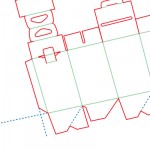 Yes, it’s true. Let’s look at the definition of these two operations. Die cutting is a process by which a die (made out of sharpened steel) is used to cut irregular shapes out of printed sheets. Die Scoring is the process of pressing a crease into a sheet of paper to allow it to fold accurately. Scoring serves two purposes; it prevents the ink (and paper) from cracking at the edge of the fold and ensures the best quality product when folding paper or board stocks. When a die is made, the knives are placed in cutting positions and the scoring rules are placed in the scoring areas. The electronic die template is color coded to communicate to the die manufacturer which lines are for cutting (red) and which are for scoring (green).
Yes, it’s true. Let’s look at the definition of these two operations. Die cutting is a process by which a die (made out of sharpened steel) is used to cut irregular shapes out of printed sheets. Die Scoring is the process of pressing a crease into a sheet of paper to allow it to fold accurately. Scoring serves two purposes; it prevents the ink (and paper) from cracking at the edge of the fold and ensures the best quality product when folding paper or board stocks. When a die is made, the knives are placed in cutting positions and the scoring rules are placed in the scoring areas. The electronic die template is color coded to communicate to the die manufacturer which lines are for cutting (red) and which are for scoring (green).
2. Substrates affect knife blade life.
 Just like your kitchen knife, die cutting knives get dull through extended use. Some have asked how many die cut impressions can be performed before the die cut knives need to be replaced. The answer depends upon the substrate that is being cut. A paper cutting die might last for millions of impressions where a die that cuts rigid plastics may only last a few hundred thousand impressions. Dies can be used multiple times and then stored in a die library ready for re-use. Die cutting knives are formed from thin steel strips. Steel is the preferred material due to its strength, relatively low cost and availability.
Just like your kitchen knife, die cutting knives get dull through extended use. Some have asked how many die cut impressions can be performed before the die cut knives need to be replaced. The answer depends upon the substrate that is being cut. A paper cutting die might last for millions of impressions where a die that cuts rigid plastics may only last a few hundred thousand impressions. Dies can be used multiple times and then stored in a die library ready for re-use. Die cutting knives are formed from thin steel strips. Steel is the preferred material due to its strength, relatively low cost and availability.
3. Durometer measures rubber hardness.
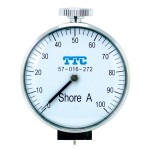 Rubber strips are affixed to the die to help improve the cutting performance. The formal term for this part is “ejection rubber” and it is a critical part of the die cutting process. Ejection rubber is used on the dies to hold the sheet stable when the knives perform a cut. The ejection rubber also helps release the die cut piece from the die once the cut is completed. Ejection rubber is measured in durometer, that is, the resistance of the rubber when put under pressured loads. The higher durometer rating, the harder the rubber.
Rubber strips are affixed to the die to help improve the cutting performance. The formal term for this part is “ejection rubber” and it is a critical part of the die cutting process. Ejection rubber is used on the dies to hold the sheet stable when the knives perform a cut. The ejection rubber also helps release the die cut piece from the die once the cut is completed. Ejection rubber is measured in durometer, that is, the resistance of the rubber when put under pressured loads. The higher durometer rating, the harder the rubber.
4. The cutting board.
Due to its strength and stability, Birch is the material of choice for most die cutting boards. A channel is laser cut into the wood surface using a laser CAD plotter. The pattern is cut into the birch board following the electronic die line. Once the pattern is cut, the board is ready to receive the steel knives and crease rules which are installed by hand using a rubber mallet. Cutting boards can be re-tooled when their die cutting knives become dull or worn if the surface is intact and the board material is in good condition.
5. Follow the directions.
 Grain direction is one of the most overlooked details when planning a successful print or packaging project. Paper grain is the direction the paper fiber runs on a stock, resulting from the paper manufacturing process. Paper is identified as either grain short (grain is parallel to paper’s short side) or grain long (grain is parallel to the paper’s long side), depending on how the paper is cut. Tear a piece of paper and you will see the direct impact of grain direction. Tearing against the grain will cause a jagged tear where tearing with the grain will allow for a straight tear. Paper folding is impacted in a similar manner. If a fold must go against the grain, the piece will need to be scored. This makes for a smooth fold and minimizes the chances of inks and coatings cracking. When designing your printed piece or packaging, close attention must be paid to the paper grain direction. In packaging, producing a larger sized folding carton with the wrong grain direction can cause many problems including a distortion called “box bulge”. Some paperboard mills manufacture bi-directional stocks which minimize cracking and make for easier production. Contact us for a list of these versatile stocks.
Grain direction is one of the most overlooked details when planning a successful print or packaging project. Paper grain is the direction the paper fiber runs on a stock, resulting from the paper manufacturing process. Paper is identified as either grain short (grain is parallel to paper’s short side) or grain long (grain is parallel to the paper’s long side), depending on how the paper is cut. Tear a piece of paper and you will see the direct impact of grain direction. Tearing against the grain will cause a jagged tear where tearing with the grain will allow for a straight tear. Paper folding is impacted in a similar manner. If a fold must go against the grain, the piece will need to be scored. This makes for a smooth fold and minimizes the chances of inks and coatings cracking. When designing your printed piece or packaging, close attention must be paid to the paper grain direction. In packaging, producing a larger sized folding carton with the wrong grain direction can cause many problems including a distortion called “box bulge”. Some paperboard mills manufacture bi-directional stocks which minimize cracking and make for easier production. Contact us for a list of these versatile stocks.
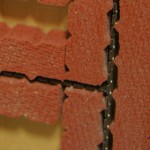 6. A “Nick” is more than a name.
6. A “Nick” is more than a name.
Sure, your next-door neighbor’s brother-in-law might go by this name, but a “Nick” is also a term for a critical step in the finishing process. Nicks are the result of several small gaps we make in the die cutting knives. These gaps keep the die cut piece and the support material as one piece for final delivery to the pile. These gaps can also be inserted by the press operator using a hand-held rotary cutting tool.
7. Sometimes we “kiss” the substrate.
There is a lot of kissing going on in our production floor. A Kiss cut is performed when we want the cut piece to stay married to the support material. A kiss cut is similar to a perforated cut where the end user pops the piece out from the main carrier. The cut goes just deep enough to penetrate the top surface leaving the backer intact. Coupons, sticker sheets or pull-back reveals are great examples where kiss cutting technique is used.
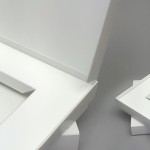 8. Good design and die cutting goes hand-in-hand.
8. Good design and die cutting goes hand-in-hand.
Whether your finished piece is a simple food sleeve or a complex pop-up mailer, the design is a critical part of the project. Complex designs tend to take up more press sheet “real estate” than say, a 5” x 7” postcard that can be easily arranged on the press sheet (see #10). Sometimes paper waste is unavoidable. Discuss your plans with a structural designer in the early stages of your project. Structural designers can be a wealth of knowledge when designing an efficient, automated folded piece. Structural designers collaborate with the folding and gluing department to ensure maximum production efficiency is achieved. Structural designers can foresee issues and develop a great product solution while minimizing paper waste. As it is often stated “think finishing at the beginning”.
9. Patterns can be cut by other means.
There are several ways to cut a substrate; die cutting being one of them. Some projects require a “nick-free” cutting process to ensure a smooth edge. Nick-free cutting (sometimes called “Ream Cutting” or “High-Die” Cutting) involves the cutting of a pile of stacked sheets to the same size and shape. Tall stacks of paper sheets are loaded into a tray and pushed through a ream process that performs a cut on a stack of sheets. Nick-free cutting is typically reserved for high-volume production runs. Coupons, playing cards, gift cards and paper cups are a few examples of products that are converted this way.
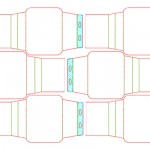 10. Nesting is not for the birds.
10. Nesting is not for the birds.
Die cutting can become a wasteful and expensive process if a finished piece is not designed and planned properly. Structural designers work hand-in-hand with the die cutting and folding/gluing departments. Why? A well-designed structure is one that performs its function and can be manufactured cost-effectively for maximum production efficiency. This includes the process of sheet optimization. Sheet optimization is the process of designing products that can be nested on the press form (press sheet) for maximum use of the material. Nesting allows the die cutting layouts to fit tightly on the press form. This can simplify the die production, reduce material consumption and improve production efficiency. The image at the left shows how a food sleeve is nested on the press form. Notice the efficient use of paper and minimal waste that will result?
So there you have it, ten things to know about die cutting and scoring. If this article was forwarded to you chances are you are not on our mailing list! We encourage you to join us so you don’t miss another set of helpful tips! We will be sharing new tests, technologies and tips on getting innovative throughout the year! Interested in learning more? Stop by Printing Arts! Our die cutting and structural design departments are ready to offer you a tour! We hope to see you soon!
All content copyright 2014 © Printing Arts a division of RIPA LLC

